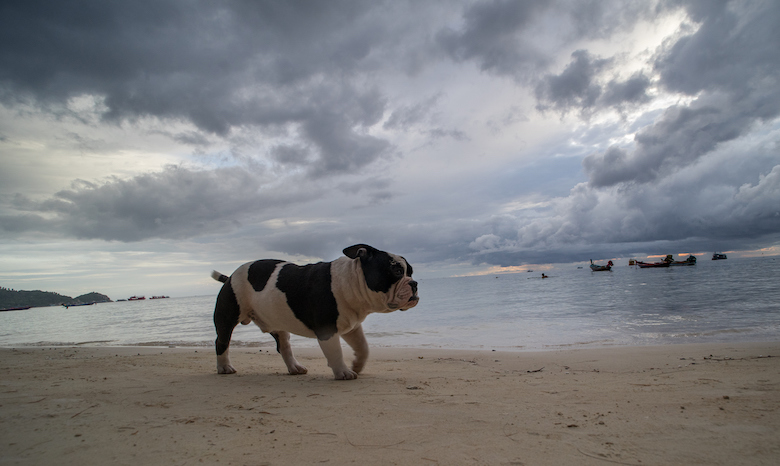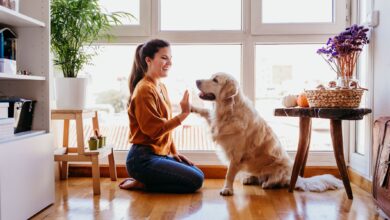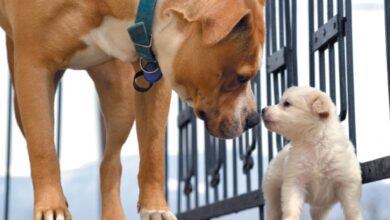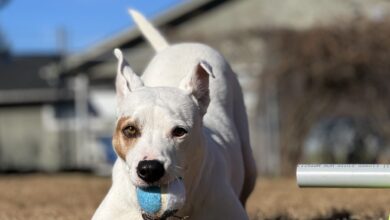Facts About the Olde English Bulldogge Dog Breed

[ad_1]
Proud parent of an Olde English Bulldogge who’s looking to learn more or thinking about getting an Olde English Bulldogge? Learn the facts about this dog breed here:
Quick Facts About the Olde English Bulldogge
An Olde English Bulldogge.
- Weight: 65 – 130 pounds | male
60 – 120 pounds | female - Height: 19 – 25 inches | male
18 – 24 inches | female
Olde English Bulldogges are sturdy, muscular and big-boned — yet, somewhat nimble and athletic. Their powerful, bulky heads have broad muzzles and furrowed brows. Their ears can be perky or hanging. They have thick, powerful necks and stocky legs — creating a somewhat “cobby” body. Old English Bulldogges have short, coarse coats that can come in white with patches of red, gray and brindle; or solid colors of fawn, red, black or black & white.
Traits
- Loyal
- Athletic
- Docile
- Protective
- Bold
Who Gets Along With Olde English Bulldogges?
- Families
- Active, sporty types
- Experienced dog handlers
What They Are Like to Live With?
Olde English Bulldogges may look “ready-to-rumble,” but in reality they are sweet and gentle dogs with eager-to-please attitudes. They are very responsive to commands and exceedingly loyal to their families. Olde English Bulldogges will bend over backwards to please.
Tough and athletic, Olde English Bulldogges have an impressive strength and stamina. However, they may prefer long walks instead of cross-country runs. Always game for playtime in the backyard or chew-toy games on the carpet, Olde English Bulldogges are friendly and outgoing — even with strangers. But these dogs will raise a ruckus if they sense a true threat.
Things You Should Know
Olde English Bulldogges can live as long as 12 years. One of the healthier Bulldog breeds, some may still be prone to hip dysplasia and other common health problems. Also, Olde English Bulldogges are prone to bloat. Feed them smaller meals throughout the day to prevent this from occurring.
Olde English Bulldogge History
During the last few centuries, the Bulldog has gone through many transformations, becoming heavier and less athletic. In 1971, Pennsylvania native David Leavitt set out to create an English Bulldog in the traditional sense — less intense, more nimble and healthier. Crossing the Bulldog, American Pit Bull Terrier, Bullmastiff and the American Bulldog, Mr. Leavitt managed to create today’s Olde English Bulldogge.
Featured Image: mhong84/Getty Images
Read Next: American Bulldog
[ad_2]
Source link






